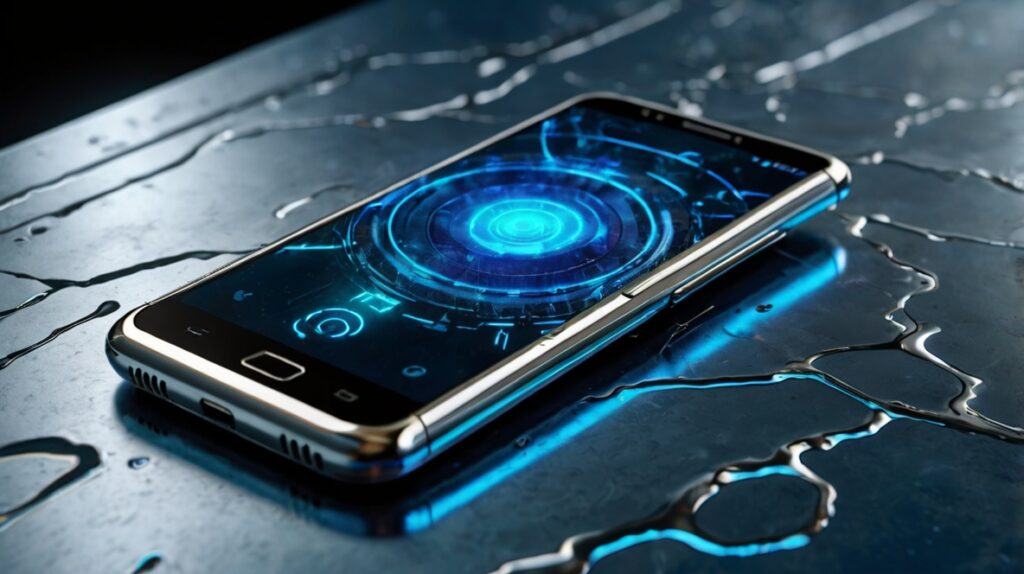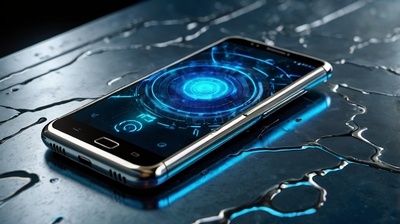
Keep Your Cool: The Ultimate Guide to Solving Android Phone Overheating Problems
There’s nothing quite like the feeling of your Android phone getting uncomfortably hot in your hand. Whether you’re gaming, streaming, or just browsing, an overheating device can be frustrating, leading to performance drops, battery drain, and even long-term damage. But why does your phone turn into a mini-furnace, and more importantly, what can you do about it?
As an expert in all things Android and mobile tech, I’m here to provide you with a comprehensive, authoritative, and trustworthy guide to understanding and fixing Android phone overheating problems. We’ll dive deep into the causes, offer practical solutions, and equip you with the knowledge to keep your device running cool and efficient. This post is optimized with Rank Math in mind, ensuring you get the most useful and timely information.
Understanding the Heat: Why Your Android Phone Overheats
Before we can fix the problem, we need to understand its roots. Android phones, like all electronic devices, generate heat as their internal components work. However, excessive heat indicates something is amiss. Here are the primary culprits behind an overheating Android phone:
- Intensive Usage and Demanding Apps: High-performance tasks like graphic-intensive gaming, prolonged video recording, heavy multitasking, or continuous GPS navigation put a significant strain on your phone’s processor (CPU) and graphics processing unit (GPU) (avg.com). This increased workload directly translates to more heat generation.
- Background Apps and Processes Gone Wild: Even when you’re not actively using your phone, apps running in the background, syncing data, or receiving constant notifications can keep your CPU busy and warm (efani.com). Rogue apps or software bugs can also cause processes to get stuck, leading to continuous high CPU usage and heat (efani.com).
- Environmental Factors: This is often overlooked but plays a huge role. Leaving your phone in direct sunlight, inside a hot car, or in a warm room can rapidly increase its internal temperature (moft.us). Manufacturers generally recommend keeping devices between 32-95°F (0-35°C) for optimal performance and safety (tomsguide.com), while some suggest a range of -4 to 113°F (-20 to 45°C) to avoid damage (pcmag.com).
- Charging Habits and Faulty Components: Charging your phone inherently generates heat, especially with fast charging technologies (android.stackexchange.com). Using your phone while it’s charging further exacerbates this. Moreover, a worn-out or faulty battery, a damaged charging cable, or an incompatible charger can contribute significantly to overheating (ozmobiles.com.au).
- Outdated Software and Malware: Software bugs, especially in older operating system versions, can lead to inefficient power management and overheating (avg.com). Similarly, malware or viruses can push your phone’s CPU to its limits, causing it to overheat and potentially damage the battery (ozmobiles.com.au).
- Poor Ventilation (Phone Cases): While protective cases are great for preventing physical damage, some can trap heat, preventing your phone from dissipating it effectively (xfinity.com).
Comprehensive Solutions for Android Phone Overheating
Now that we know what causes the problem, let’s explore practical and effective solutions to cool down your Android device and prevent future overheating episodes.
Immediate Actions to Cool Down Your Hot Phone
If your phone is already hot to the touch, here’s what you should do right away:
- Remove the Case: This is often the first and simplest step. A protective case can trap heat, so taking it off allows for better airflow and heat dissipation (avg.com).
- Move to a Cooler Environment: Get your phone out of direct sunlight or any hot surroundings. Place it in a shaded, cooler area (avg.com). Never put it in a refrigerator or freezer, as sudden temperature changes can cause condensation and permanent damage (avast.com).
- Close All Running Apps: Force-close all applications running in the background. The more apps open, the harder your phone’s processor works (avg.com).
- Turn Off Unnecessary Features: Disable Wi-Fi, Bluetooth, GPS, and mobile data if you don’t need them. These features continuously use resources and generate heat (avast.com).
- Enable Airplane Mode: This disables all wireless communications, significantly reducing your phone’s workload and allowing it to cool down quickly (avg.com).
- Reduce Screen Brightness: A brighter screen demands more power from the battery, which generates more heat (avg.com).
- Restart Your Phone: A simple restart can resolve minor software glitches that might be causing the phone to work harder than necessary (avg.com).
- Avoid Using While Charging: If your phone is overheating while plugged in, unplug it and let it cool down before resuming charging. Using it during this time increases heat generation (android.stackexchange.com).
Long-Term Strategies to Prevent Overheating
To keep your Android device cool and healthy in the long run, incorporate these practices into your daily routine:
- Keep Software Updated: Manufacturers regularly release software updates that include bug fixes, performance improvements, and better thermal management protocols. Always ensure your Android OS and all apps are up to date (avg.com).
- Manage Background App Usage:
- Disable Auto-Start: Some apps launch automatically at startup. Check your phone’s settings to control which apps can run in the background.
- “Put Unused Apps to Sleep” (Samsung): Many Android devices, like Samsung phones, offer features to automatically put unused apps into a deep sleep, preventing them from consuming resources (ozmobiles.com.au).
- Uninstall Unused Apps: Regularly review and uninstall apps you no longer use, as they can still consume background resources (racoman.com).
- Optimize Gaming and Intensive Use:
- Take Breaks: If you’re gaming or performing intensive tasks, take regular breaks to let your phone cool down (psafe.com).
- Lower Graphics Settings: Reduce in-game graphics settings to lessen the load on your GPU.
- Use Gaming Modes: Many Android phones offer “Gaming Modes” that optimize performance while trying to manage thermals.
- Smart Charging Practices:
- Use Manufacturer-Approved Chargers: Always use the charger and cable that came with your phone, or certified replacements. Off-brand or faulty chargers can be inefficient and generate excessive heat (ozmobiles.com.au).
- Avoid Overcharging: While modern phones have charging cut-offs, continuously leaving your phone plugged in overnight can contribute to heat buildup. Unplug it when it reaches a high percentage, especially if you’re not using it (psafe.com).
- Charge in a Cool, Well-Ventilated Area: Don’t charge your phone under pillows, blankets, or other materials that can trap heat (pcmag.com).
- Clean Up Your Device:
- Clear App Cache: Regularly clear the cache of individual apps or use a phone cleaning utility to remove temporary files that can slow down your device (avast.com).
- Check for Malware: Install a reputable antivirus app for Android and run regular scans. Malware can significantly increase CPU usage and cause overheating (xfinity.com).
- Consider Your Phone Case: If you frequently experience overheating, try using a thinner case or one designed for better heat dissipation. Some cases are specifically engineered with cooling properties.
- Monitor Battery Health: An aging or degraded battery can become less efficient and generate more heat. If your phone is old and frequently overheats, consider having the battery replaced by a professional.
When to Seek Professional Help or Consider an Upgrade
While most overheating issues can be resolved with the tips above, there are times when professional intervention is necessary.
- Persistent Overheating: If your brand-new phone is overheating with basic tasks, or if the problem persists despite trying all troubleshooting steps, it might indicate a hardware defect (android.stackexchange.com). In such cases, take your device to a service center.
- Sudden Performance Drops: If overheating is accompanied by frequent crashes, freezes, or significant performance degradation, it could point to a more serious internal issue.
- Physical Damage: If your phone has recently been dropped or exposed to water, overheating could be a symptom of internal damage.
If you find yourself constantly battling overheating issues with an older device, it might be time to consider upgrading. Newer Android phones often feature more efficient processors and advanced thermal management systems to handle demanding tasks without excessive heat buildup.
Maximizing Your Phone’s Lifespan and Performance
Taking care of your Android phone’s thermal health is crucial for its longevity and performance. By understanding the causes of overheating and implementing these proactive solutions, you can ensure your device remains a reliable companion for years to come. Remember, a cool phone is a happy phone, delivering the smooth, responsive experience you expect.
For those interested in building their expertise and potentially creating content around topics like Android troubleshooting and technology, I highly recommend exploring platforms like Wealthy Affiliate. It’s a comprehensive online training platform and community that teaches individuals how to make money online through affiliate marketing. You can learn more about how to start your own online business and become an authority in your niche by checking out Wealthy Affiliate.
By staying informed and taking preventive measures, you’ll not only resolve current Android phone overheating problems but also safeguard your device against future issues, ensuring it performs optimally in all situations.

